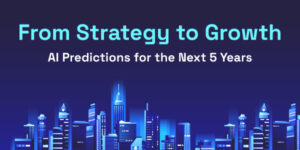Introduction to ETL
ETL (Extract, Transform, Load) is a foundational process that plays a crucial role in effective data handling, as data management is critical for modern businesses. ETL has three main stages:
- Extracting data from different sources
- Transforming it into usable formats
- Loading it into the target destination
This ensures that the information is organized, cleaned, and ready for analysis, decision-making, or any other business operation.
Extract Phase: Gathering Data
Source Identification: In this first step all data sources are identified and accessed such as databases, files, APIs (Application Programming Interfaces), web scraping tools etc.
- Data Extraction: Here, raw data is fetched without making any changes with the help of ETL tools, which makes this process fast and efficient.
- Data Profiling: It’s important to know the structure and quality of our extracted dataset. So, we can assess how complete, accurate, consistent, etc., our given input set is using various profiling techniques, such as completeness check, accuracy check, etc.
Transform Phase: Shaping Data
- Data Cleaning: Raw data may have errors, inconsistencies, and missing values, so cleaning them up means removing duplicates, correcting errors wherever necessary, filling in missing values, and ensuring their quality altogether.
- Data Integration: At this stage, multiple-sourced datasets are integrated into one single file (dataset), having uniformity throughout among them by merging, joining, blending, etc., based on common attributes between different records within these sets themselves respectively.
- Data Transformation: In order to analyze/make decisions about it later on, we need a transformed version of such information where applicable forms should be taken, e.g., normalizing, aggregating, summarizing, applying business rules logic, etc., depending upon each case separately, always keeping in mind relevance factor too while doing so in every instance.
Load Phase: Serving Data
- Target Data Model: Prior to loading into a destination (target) system like a data warehouse or database, etc., a model should be defined in terms of how it will be structured and organized there.
- Data Loading: Transformed information needs to get loaded within the target place through the ETL tools/processes. The full load technique can be utilized if we have a lot of records coming frequently, and then incremental or delta loads are performed where necessary depending on volume updates, etc., respectively.
- Data Validation: Once it has been loaded, validation checks must run over each item involved so as to confirm its correctness, completeness, and relevance against predefined criteria relevant therewith. This is also called the “quality assurance” step.
ETL Tools and Platforms
- Informatica: Informatica provides robust data integration capabilities and offers a suite of tools for ETL, data governance, and data quality management.
- Talend: Talend provides open-source and enterprise-grade ETL solutions, with support for cloud integration, scalability, and flexibility being some of its key strengths.
- Microsoft SSIS-SQL: Server Integration Services (SSIS) is a popular Microsoft ETL tool that works very closely with SQL Server databases and Microsoft Azure cloud services, thereby making them an ideal combination to work together smoothly when needed, especially during heavy load situations where performance becomes crucially important.
ETL Best Practices
- Data Governance: Ensuring accuracy, consistency, and privacy security throughout the entire process by establishing appropriate policies around the same, such as those relating to metadata management, etc.
- Documentation: Creating comprehensive documentation for transparency knowledge sharing purposes which includes among other things; ETL process flow charts, data mappings, transformation rules, business logic expressions used within various parts thereof etc.
- Version Control: Having good housekeeping practices by implementing version control for ETL workflow scripts would help keep track of changes made while also enabling easy management updates when required so that everything remains reproducible.
Applications of ETL
- Business Intelligence (B.I.) – ETL is essential for Business Intelligence initiatives as it enables gathering, integrating, analyzing data used in reporting, dashboards & decision support systems.
- Data Warehousing: Data warehousing relies heavily on ETL processes for populating cleansed, transformed structured information into various data marts warehouses, etc.
- Real-Time Analytics: Modern ETL techniques have made real-time integration analysis possible. This allows organizations to make timely decisions based on current facts rather than waiting until later when things may have changed already, leading them astray at times like these and so forth.
Challenges and Future Trends
- Complexity of Data Integration: Integrating data from different sources with different formats, structures, and semantics can be complex and challenging.
- Scalability: With the exponentially growing data volumes, ETL processes need to scale up for large datasets while ensuring optimal performance.
- ETL in the Cloud: The scalability, flexibility, and cost-effectiveness of cloud based ETL solutions have led to their adoption as they drive cloud data integration.
- Processing Streaming Data: Real-time and streaming data processing capabilities have become necessary for dealing with dynamic and continuous data flows.
Conclusion
ETL is a foundational procedure that allows organizations to maximize the use of their information. Companies can streamline management of data, gain insights and remain competitive in today’s world driven by big data. It’s not only about moving data around; ETL creates valuable assets that energize innovation, accelerates growth, hence leading to success.
Share this glossary

